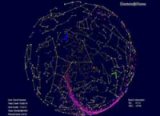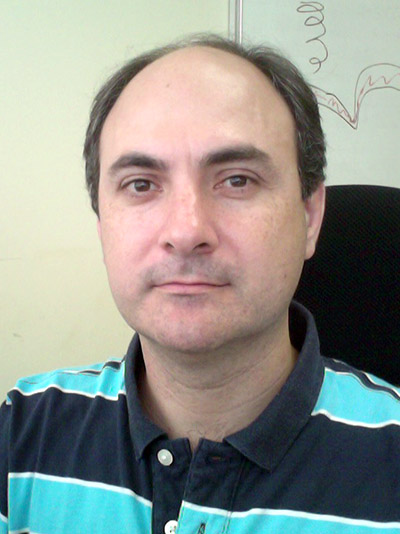These icons link to social bookmarking sites where readers can share and discover new web pages.

"
According to Albert Einstein, we live in a universe full of gravitational waves. He suggested that the movements of heavy objects, such as black holes and dense stars, create waves that change space and time. We have a chance to detect these waves, but we need your help to do it!". This is how the project is introduced in their
website. Similar to the
SETI@home (Search for ExtraTerrestrial Intelligence) the project
Einstein@home creates a network of home computers to analyze gravitational wave detectors data. The project is sponsored by the
American Physical Society (APS).
These icons link to social bookmarking sites where readers can share and discover new web pages.

While looking at a news blog (
o velho) I read about the most dangerous toys ever made. One of them was very interesting and I would like to share in this blog. One of these toys was an Atomic Energy Lab for kids, just like the Chemistry sets we find nowadays in any toy store. It was the 50s in the USA and Nuclear Science was really a subject in everybody lives because of cold war. It is interesting because it shows kids how fascinating the atomic and nuclear world can be and, if treated with care, it shall not be dangerous. I am not sure about the quality of these toys because I never had the opportunity to see one of them but I could find some reviews. You can read more about these toys
here and
here.
These icons link to social bookmarking sites where readers can share and discover new web pages.
O Curso está acabando. Abaixo estão as notas parciais e presença das turmas. Qualquer problema, por favor entre em contato comigo diretamente. As notas do último relatório estarão disponíveis na segunda feira.
Turma da manhã (FINAL)
Turma da tarde (FINAL)
These icons link to social bookmarking sites where readers can share and discover new web pages.
It has been a while since I decided to use
Pivot also as framework for the
PelROOT web page. It is now done, although the documentation is still being ported to the new framework. I hope that
Pivot will help me keep the
PelROOT page updated and will provide me tools to add more and more FAQs, examples and support docs to the page.
These icons link to social bookmarking sites where readers can share and discover new web pages.
RICHARD FEYNMAN no Brasil (extraído da comunidade de Física do Orkut,
deste blog e do
Jornal da Poesia)
" ... Depois da preleção, alguns estudantes formaram uma pequena delegação e vieram até mim, dizendo que eu não havia entendido os antecedentes deles, que eles podiam estudar sem resolver os problemas, que eles já haviam aprendido aritmética e que essa coisa toda estava abaixo do nível deles.
(more)
These icons link to social bookmarking sites where readers can share and discover new web pages.
Nos últimos meses tem havido grandes discussões sobre a carga didática no IFUSP e do papel dos monitores para completar a carga didática do Instituto.
(more)
These icons link to social bookmarking sites where readers can share and discover new web pages.
Como estou participando do STAR Collaboration Meeting e, depois, do Quark Matter, na China, eu terei que adiar as próximas aulas do curso de c++ e ROOT. As novas datas para as duas últimas aulas são:
30/11 e
7/12. Todos os interessados podem comparecer. O local continua o mesmo: a sala de seminários do Linac.
These icons link to social bookmarking sites where readers can share and discover new web pages.
No post anterior há uma matéria de como o Grid tem ajudado o experimento STAR a investigar a matéria nuclear em condições extremas e o impacto dos seus resultados na comunidade científica. O Cluster de computadores do nosso grupo foi o primeiro site fora dos EUA a fazer parte do
OpenScience Grid e vem executando tarefas para o experimento STAR há bastante tempo. Para ver quantos jobs são executados pelos clusters do STAR em tempo real é só
clicar aqui.
These icons link to social bookmarking sites where readers can share and discover new web pages.
From Science Gid This Week
Microseconds after the Big Bang, the universe consisted only of a soup of free quarks and gluons. Experiments at the Relativistic Heavy Ion Collider (RHIC) at Brookhaven National Laboratory seek to reproduce this soup—called the quark-gluon-plasma—by creating "little bangs" from high-energy collisions of heavy nuclei. The Open Science Grid's software stack helps the STAR experiment study the quark-gluon plasma in the laboratory by bringing its far-flung computing resources into a uniform environment.
Click here for the full text.
These icons link to social bookmarking sites where readers can share and discover new web pages.
O Nosso grupo de pesquisa faz parte de importantes experimentos de Física de altas energias (
STAR, em BNL e
Alice, no CERN).
(more)
« Previous page |
Displaying entries 171-180 of 204 |
Next page »
 "According to Albert Einstein, we live in a universe full of gravitational waves. He suggested that the movements of heavy objects, such as black holes and dense stars, create waves that change space and time. We have a chance to detect these waves, but we need your help to do it!". This is how the project is introduced in their website. Similar to the SETI@home (Search for ExtraTerrestrial Intelligence) the project Einstein@home creates a network of home computers to analyze gravitational wave detectors data. The project is sponsored by the American Physical Society (APS).
"According to Albert Einstein, we live in a universe full of gravitational waves. He suggested that the movements of heavy objects, such as black holes and dense stars, create waves that change space and time. We have a chance to detect these waves, but we need your help to do it!". This is how the project is introduced in their website. Similar to the SETI@home (Search for ExtraTerrestrial Intelligence) the project Einstein@home creates a network of home computers to analyze gravitational wave detectors data. The project is sponsored by the American Physical Society (APS).



 While looking at a news blog (
While looking at a news blog (